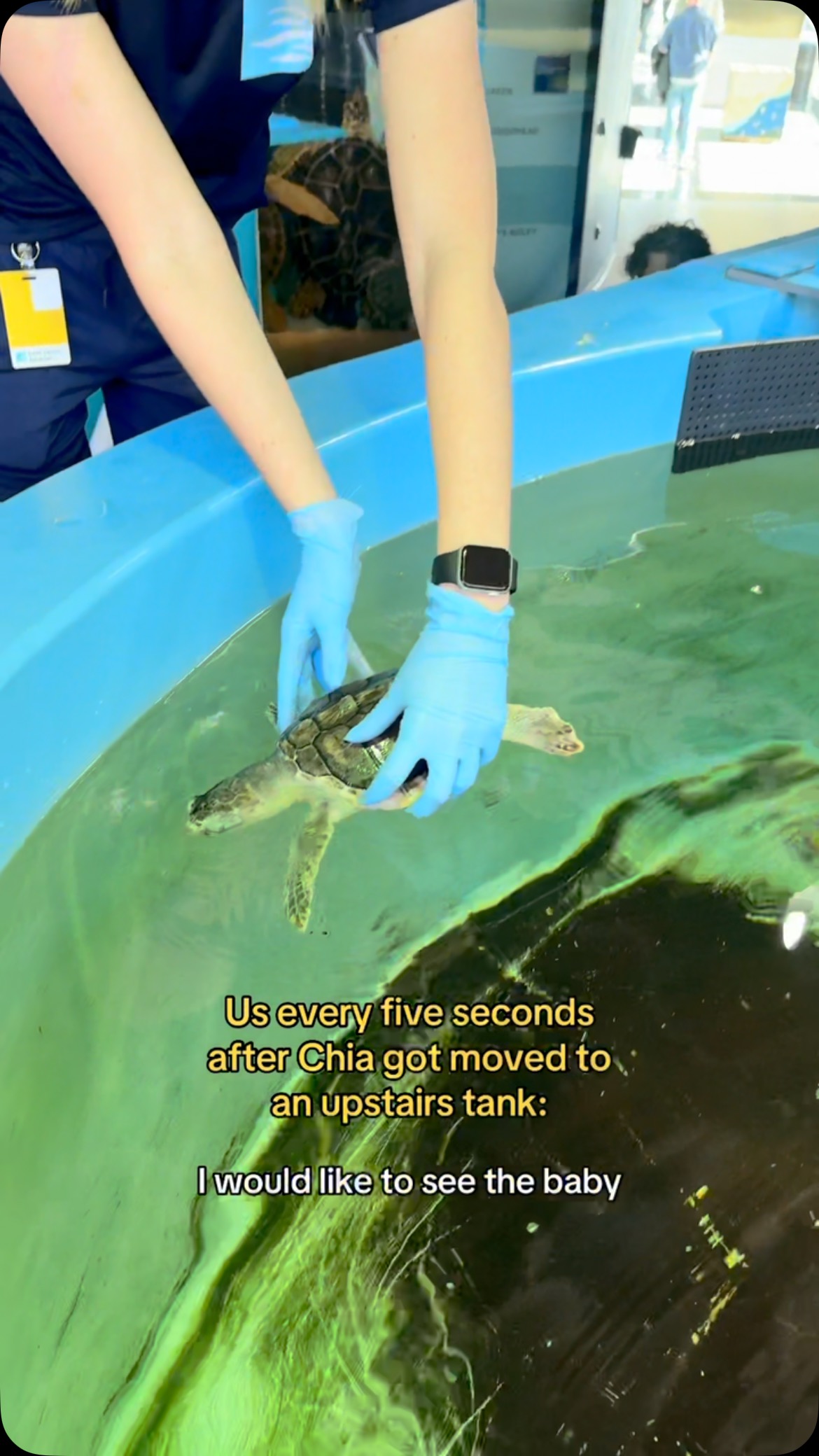- The Rehabilitation and Recovery Journey of Chia the Kemp’s Ridley Sea Turtle
- The Importance of Critical Care in Marine Life Conservation
- Threats to Sea Turtles and the Impacts of Human Activity on Their Survival
- The Role of Aquariums and Marine Resource Departments in Sea Turtle Conservation
- The Vitality of Public Awareness and Engagement in Wildlife Preservation
Chia’s story is a tale of resilience and recovery, embodying commitment to wildlife conservation. Found last August, helpless and wrapped in debris, Chia’s initial condition was grim. The Kemp’s ridley sea turtle, weighing just 1.4 pounds, was an unprecedented admit for the aquarium. Partial amputation of the right front flipper was necessary to remove the damaged tissue. Yet, under expert care, Chia has shown remarkable improvement and is now ready to continue recuperating in a publicly-viewable tank.
Successful rehabilitation involves varied aspects, from initial rescue to eventual recovery. It requires knowledge, equipment, and dedication. The infrastructure of the aquarium supports this, ensuring Chia receives quality care. The rehabilitation framework comprises medical attention, feeding support, and gradual reintroduction to a simulated natural environment. Each element contributes to the sea turtle’s recuperation while reinforcing the aquarium’s mission to promote marine life conservation.
Chia’s journey underscores the importance of critical care in marine conservation. Injuries like those sustained by this turtle demand acute medical attention. Specialized teams operate with precision, drawing upon their skills and experience. Rehabilitation involves an interdisciplinary approach to provide tailored care plans that address each animal’s specific needs, establishing the foundation for successful recovery and eventual reintroduction to their natural habitats.
Sea turtles, such as Chia, face numerous threats, primarily due to human activity. Entanglement in marine debris, often left by fishing practices or other human activities, forms a significant hazard. Pollution, habitat destruction, and climate change further endanger these vulnerable species. Accumulative impacts can be catastrophic, underscoring the urgency for intervention and counteractive strategies to mitigate human-induced threats to marine biodiversity.
Aquariums and marine resource departments are at the forefront of sea turtle conservation. They play a pivotal role, not only in rehabilitation but also in public education. Utilizing platforms like the visible tank Chia now occupies allows the aquarium to effectively communicate conservation messages and motivate the public to engage in wildlife protection efforts. The strategic use of social media and educational programs amplifies this impact, reaching broader audiences.
Conservation efforts require authorization and collaboration with government agencies. Permits, such as the SC Department of Natural Resources Marine Turtle Permit No. 2024-0004, facilitate legal and ethical rehabilitation practices. These arrangements ensure that interventions follow regulations and maintain high standards of animal care and welfare.
Public awareness and engagement are vital in wildlife preservation. By observing Chia’s recovery, visitors gain insights into marine conservation challenges and successes. This awareness fosters an appreciation for the complexity of marine ecosystems and the delicate balance needed to sustain them. Through interactive experiences, institutions like aquariums can cultivate a deeper connection between the public and wildlife, encouraging proactive participation in conservation initiatives.
By sharing Chia’s story, aquariums also serve as hubs for research and innovation. The data collected throughout the rehabilitation process contributes to broader scientific understanding of sea turtle biology and conservation needs. Partnerships with academic and research institutions leverage these insights, advancing conservation science and management strategies aimed at improving outcomes for sea turtles globally.
Witnessing Chia’s progress invites reflection on individual and collective responsibility for environmental stewardship. It highlights the impact of human actions on marine life and the environment, urging audiences to consider how they can contribute to conservation. Reducing plastic consumption, supporting sustainable practices, and engaging in environmental advocacy represent a few ways individuals can make a difference.
Chia’s recovery journey is more than a single success story; it is a demonstration of dedication, collaboration, and the power of education in wildlife conservation. By sharing this story, we hope to inspire action and foster a sense of responsibility, ensuring sea turtles like Chia thrive for generations to come.
*****
Source Description
That’s right, you can now go see “the baby,” too 💚 After months of rehabilitating behind the scenes, Chia is now recovering in a tank visible to all guests!
Last August, Chia was found floating offshore entangled in debris, and since then has received a partial amputation of the right front flipper to remove the damaged tissue. Weighing only about 1.4 pounds at admit, this little Kemp’s ridley was the smallest sea turtle admit in Aquarium history — making her/his incredible rehabilitation that much more sweet.
We know you want to see “the baby” 💙 Stop by today to witness Chia’s recovery in action and watch as s/he explores the new tank!
.
.
.
All sea turtle conservation work is authorized by the SC Department of Natural Resources Marine Turtle Permit No. 2024-0004


